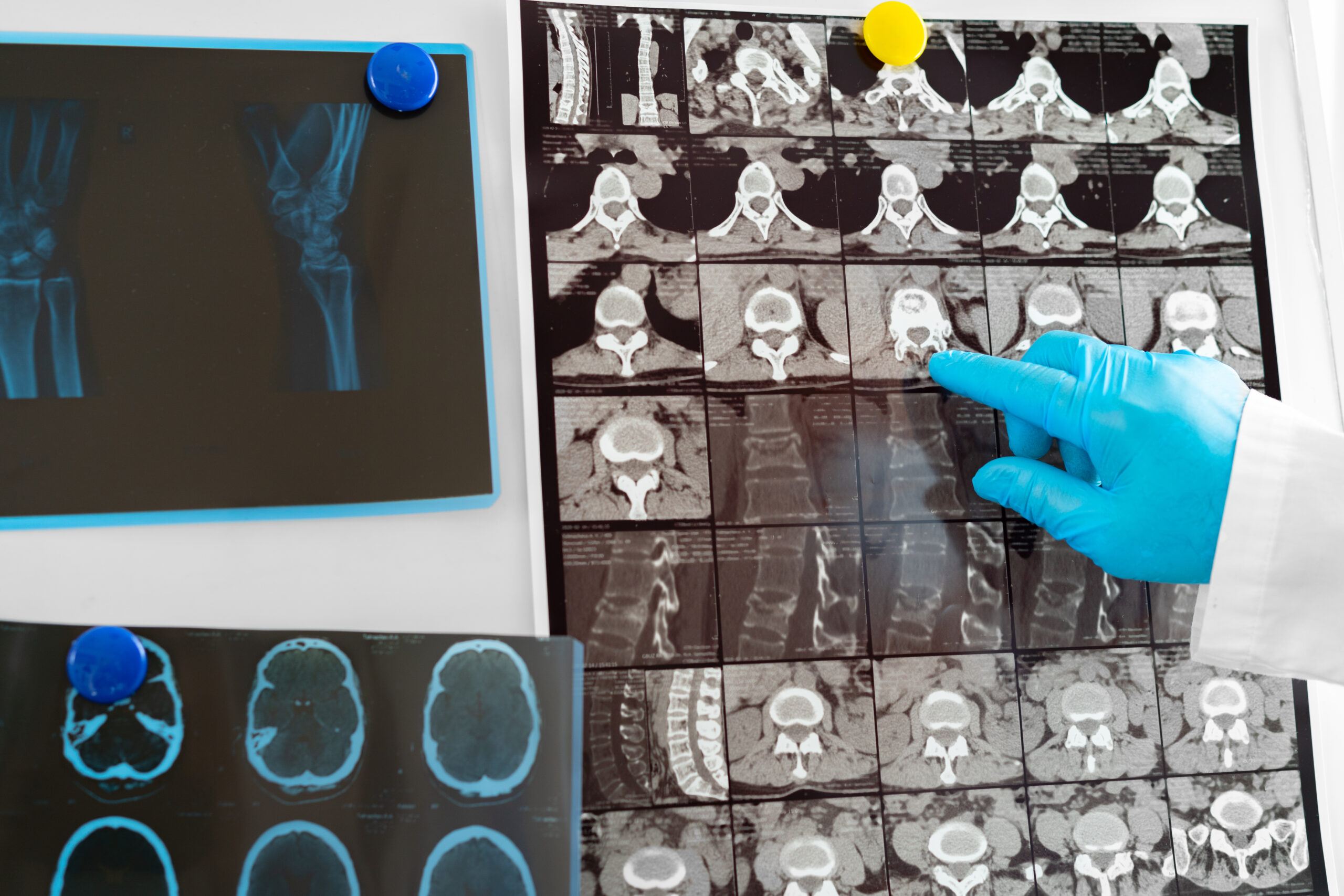Multiple Sclerosis (MS) Causes and Risk Factors

healthline – Updated 2021
Author: Laura A. Magnifico and Jill Seladi-Schulman, Ph.D.
Medically reviewed by Heidi Moawad, M.D.
Understanding multiple sclerosis (MS)
Multiple sclerosis (MS) is a progressive neurological disease that can affect the central nervous system (CNS).
Every time you take a step, blink, or move your arm, your CNS is at work. Millions of nerve cells in the brain send signals throughout the body to control functions such as:
- movement
- sensation
- memory
- cognition
- speech
Nerve cells communicate by sending electrical signals via nerve fibers. A layer called the myelin sheath covers and protects the nerve fibers. That protection ensures that each nerve signal properly reaches its intended target.
In people with MS, immune cells mistakenly attack and damage the myelin sheath. This damage results in the disruption of nerve signals. Damaged nerve signals can cause debilitating symptoms, including:
- walking and coordination problems
- muscle weakness
- fatigue
- vision problems
MS affects everyone differently. The severity of the disease and the types of symptoms vary from person to person. There are different types of MS, and the cause, symptoms, and progression of disability may vary.
What causes MS itself is unknown. However, scientists believe that four factors can increase a person’s risk for developing the disease. These risk factors are:
- infection
- genetics
- immune system
- environment
In this article, we’ll discuss each of these risk factors and the research supporting them in more detail. Keep reading to learn more.
The immune system
MS is considered an immune-mediated disease. This type of disease occurs when the immune system malfunctions and attacks the CNS.
MS is often referred to as an autoimmune disease too. In an autoimmune disease, the immune system mistakenly flags components from healthy tissue as if they are part of a foreign invader such as a bacterium or virus. This makes the immune system respond to and attack the healthy tissue.
While researchers know that MS directly affects the myelin sheath, they don’t know for sure what triggers the immune system to attack the myelin. This is why MS is considered an immune-mediated disease.
Which immune cells are involved?
A growing body of research has shown that two types of immune cell are important in MS, the B cell and T cell. In MS, these cells enter the CNS where they cause inflammation and damage to CNS tissues such as myelin.
In MS, T cells become activated by an unknown trigger, which is believed to be a myelin protein. A type known as myelin basic protein is the most well-studied myelin protein.
The activated T cells travel through blood vessels and enter the CNS. When this happens, they release a variety of molecules that lead to inflammation and tissue damage.
One type of T cell, called a regulatory T cell, normally works to slow the inflammatory response. However, regulatory T cells don’t function correctly in MS. This allows inflammation and tissue damage to continue.
B cells are the immune cells that produce antibodies. They can be activated by a type of T cell called a helper T cell. In MS, activated B cells also travel to the CNS where they produce antibodies and other proteins that can contribute to CNS damage.
Scientists are still seeking to uncover what causes these cells to become activated and attack. They’re also searching for methods to control or stop the progression of the disease.
Genetics
Several genes are believed to play a role in MS. Your chance for developing MS is slightly higher if a close relative, such as a parent or sibling, has the disease.
If your parent or sibling has MS, your lifetime risk for getting the disease is estimated to be around 3 percent. The average chances that any person will develop MS are between 0.1 and 0.3 percent.
Many people who have MS also have a relative with MS. To illustrate this, a 2014 cohort study followed 150 people who had been diagnosed with MS to see if their relatives also developed the condition.
Researchers found that 49 out of the 150 individuals (or 32.7 percent) reported at least one relative with MS over a 35-year period. A total of 86 affected relatives were reported.
What role does genetics have in MS risk?
According to the National Multiple Sclerosis Society (NMSS), about 200 genes have been studied for their role in MS risk. Many of these genes are involved in the regulation of the immune system or immune responses.
It’s important to note that MS isn’t a hereditary condition, which means that it’s not directly passed from parent to child.
Instead, research suggests that MS is a polygenic condition. This means that an individual who’s been diagnosed with MS can have a combination of genes — and not just one — that raises their MS risk.
Because genes are shared within families, it’s possible to inherit many gene variations that increase your risk for developing MS. This is particularly true for people who’ve had a close relative diagnosed with MS.
Simply knowing how many gene variations a person has isn’t enough to predict whether they’ll develop MS. Scientists believe that genetic risk factors interact with environmental and infectious risk factors to contribute to the immune system dysfunction observed in MS.
The environment
Environmental factors are things that you encounter in your surroundings. Various environmental risk factors have been linked to MS risk. Some of these include:
- low vitamin D or low sun exposure
- air pollution
- exposure to organic solvents
Of these, a 2019 review found that low vitamin D or low sun exposure were moderate environmental risk factors for MS. Air pollution and organic solvents were considered to have a weaker association.
Vitamin D
Vitamin D benefits immune system function. Sun exposure is an important source of vitamin D, although this nutrient can also be obtained in smaller amounts through diet or supplementation.
Epidemiologists have seen an increased pattern of MS cases in countries located farthest from the equator, indicating that vitamin D may play a role. People who live near the equator are exposed to more sunlight. As a result, their bodies produce more vitamin D.
The longer your skin is exposed to sunlight, the more your body naturally produces the vitamin. Since MS is considered an immune-mediated disease, vitamin D and sunlight exposure may be linked to it.
According to a 2018 review, data from observational studies suggests that getting adequate amounts of vitamin D is associated with a lower risk of MS. However, the reviewers said that additional research is needed to determine the nature of this association as well as how it’s influenced by other factors.
Low exposure to sunlight during childhood and adolescence increases the risk of developing MS in adulthood, per a 2019 review exploring both environmental and genetic risks linked to MS.
Air pollution
Examples of air pollution include vehicle emissions and fumes from manufacturing processes. It’s thought that air pollution may raise the risk of conditions such as MS by promoting inflammation and oxidative stress in the body.
However, research hasn’t necessarily supported the role of air pollution in MS risk. Two large cohort studies, both from 2017, found no association between air pollution and MS risk.
Organic solvents
Organic solvents, such as benzene and tetrachloroethylene, are chemicals that are used in many different industries. They can be present in products such as paints, adhesives, and lacquers.
These chemicals are believed to promote inflammation, potentially interacting with other MS risk factors to increase MS risk. A 2018 population study that included people with and without MS found that exposure to organic solvents increased MS risk.
Infection
There’s also some evidence that certain viral infections can increase the risk of MS. One type of infection that’s received a lot of research attention is Epstein-Barr virus (EBV). Others include:
- human herpes virus-6 (HHV-6), which leads to conditions such as roseola
- varicella zoster virus (VZV), which causes chickenpox
- cytomegalovirus (CMV)
- human endogenous retroviruses (HERVs)
The viruses above can all establish a chronic infection that lasts for a lifetime. They can also cross the blood-brain barrier, entering the CNS. In MS, it’s believed that these viruses can affect the immune system, leading to dysfunction, increased levels of inflammation, and myelin degradation.
One theory suggests that bacteria or viruses that have similar components to brain and spinal cord cells go on to trigger two immune system actions:
- the immune system mistakenly identifies normal myelin around brain and spinal cord cells as foreign
- the immune system eventually destroys the myelin around the brain and spinal cord cells
This reaction is known as molecular mimicry.
Researchers have also identified proteins that mimic myelin basic protein, which is believed to be a target of the dysfunctional immune system in MS. These proteins come from several pathogens, including:
- EBV
- HHV-6
- human coronavirus 229E
- Chlamydia pneumoniae bacteria
Epstein-Barr virus (EBV) and MS
EBV is the virus that causes infectious mononucleosis. It’s estimated that around 95 percent of adults worldwide have contracted EBV. Once you have EBV, it lies dormant within your body’s B cells where it uses a variety of its own mechanisms to hide from the immune system.
There are many theories regarding how EBV may contribute to MS. As of yet, none of them have been firmly proven. Some examples include:
- an active infection with EBV contributes to inflammation and damage in the CNS
- EBV-infected B cells accumulate in the CNS, stimulating T cells and producing antibodies that attack myelin and other CNS tissue
- T cells that are specific to the EBV protein go on to attack CNS proteins that appear similar (molecular mimicry)
- EBV-infected B cells produce molecules that are associated with inflammation
- EBV infection of B cells leads to overexpression of the receptor EBI2 on the surface of the B cell, and EBI2:
- promotes B and T cell migration to the CNS
- regulates myelin development
- is involved in immune regulation
It’s likely that EBV infection interacts with other genetic and environmental risk factors to raise MS risk. The nature of this interaction is unknown.
Other risk factors
Other risk factors may also increase your chances of developing MS. These include:
- Sex. Females are at least 2 to 3 times more likely to develop relapsing-remitting multiple sclerosis (RRMS) than males, according to the NMSS. Males and females develop primary progressive (PPMS) at approximately equal rates.
- Age. RRMS usually affects people between ages 20 and 50 years. PPMS usually occurs approximately 10 years later than relapsing forms.
- Smoking: Compared with nonsmokers, smokers may be twice as likely to be diagnosed with MS and are more likely to be diagnosed with PPMS. Risk increases the more that a person smokes.
- Having obesity: Some research has found that having had obesity in childhood or adolescence increases MS risk.
According to the NMSS, MS affects people of northern European descent more frequently, which has been thought to possibly be due to their location relative to the equator.
Takeaway
While the exact cause of MS is a mystery, researchers have identified four important risk factors for MS.
It’s believed that these four factors interact with each other in a complex manner to raise a person’s risk of developing MS. Research is ongoing to better characterize these risk factors and how they can affect MS risk.
What’s known is that those with MS are living increasingly full lives. This is the result of treatment options and overall improvements in lifestyle and health choices. With continued research, strides are being made every day to help find what can stop the advancement of MS.






